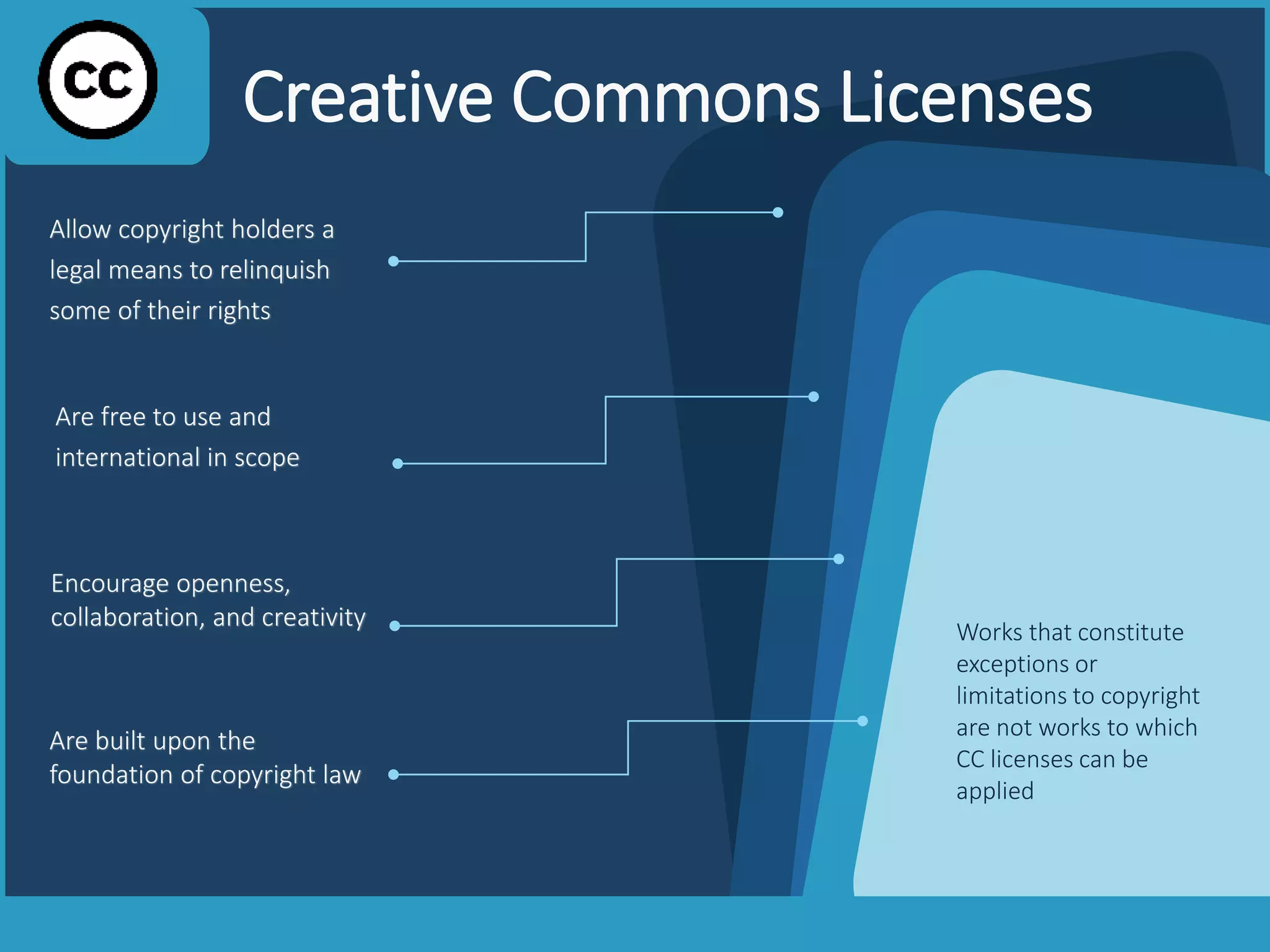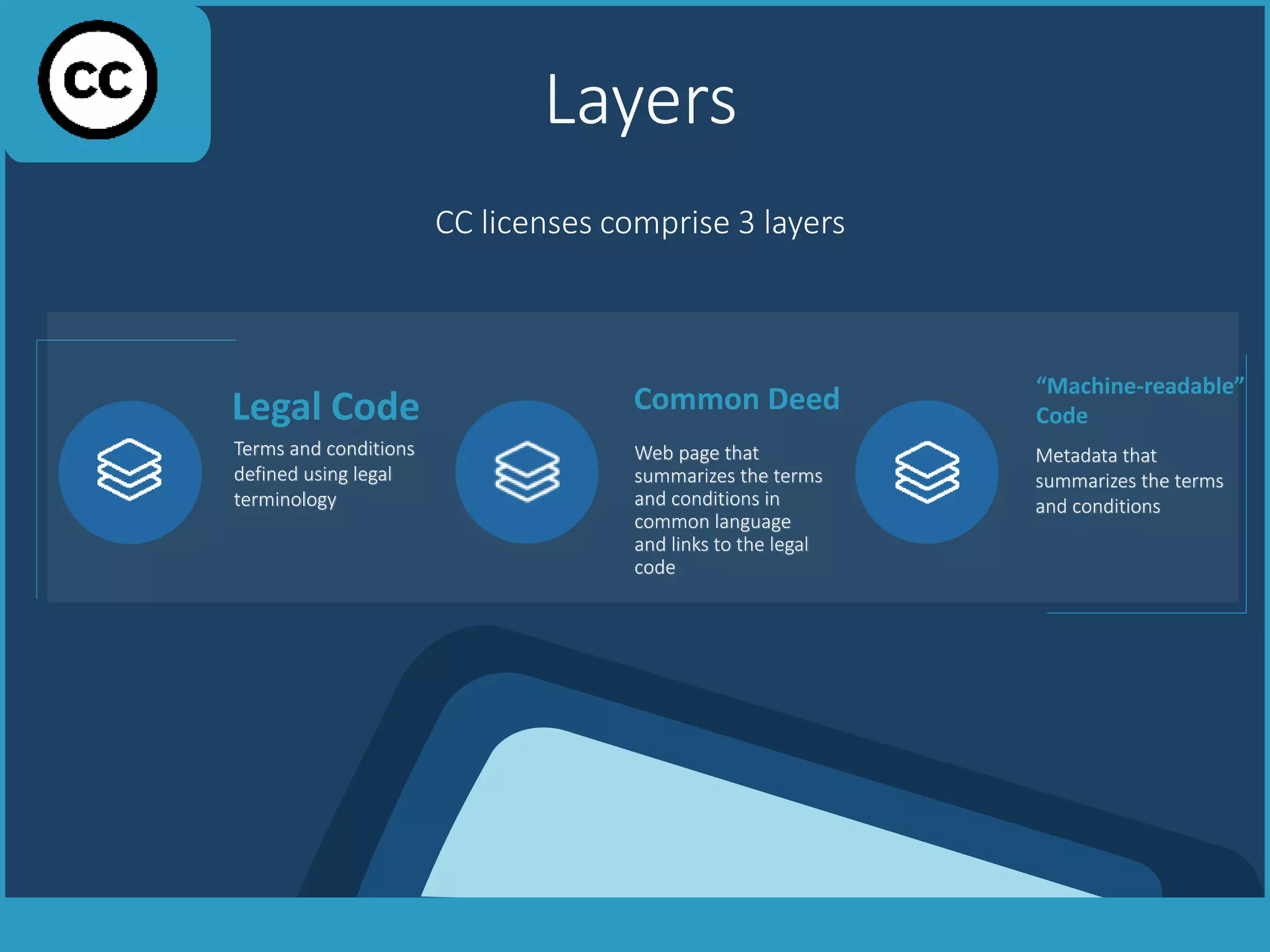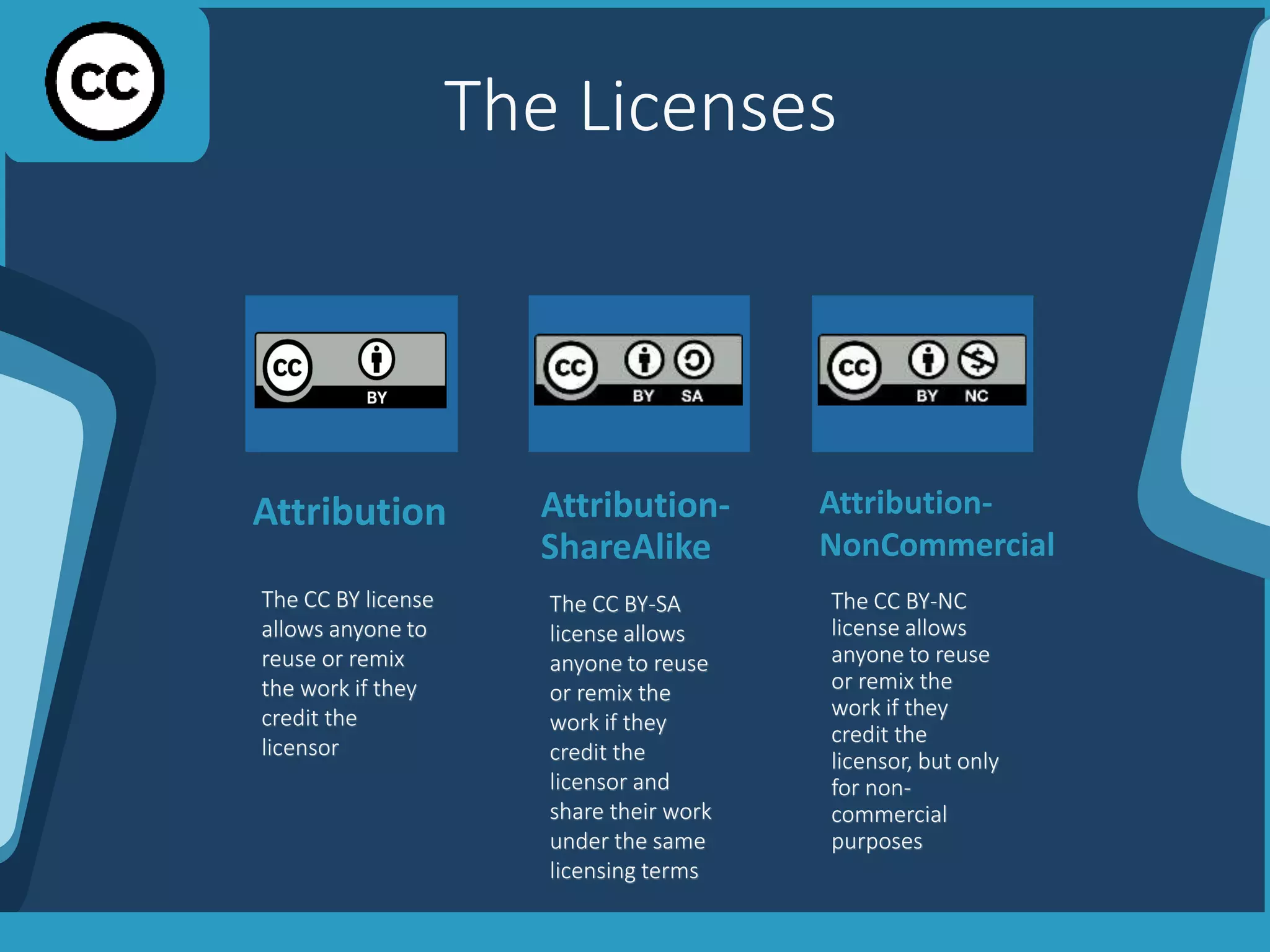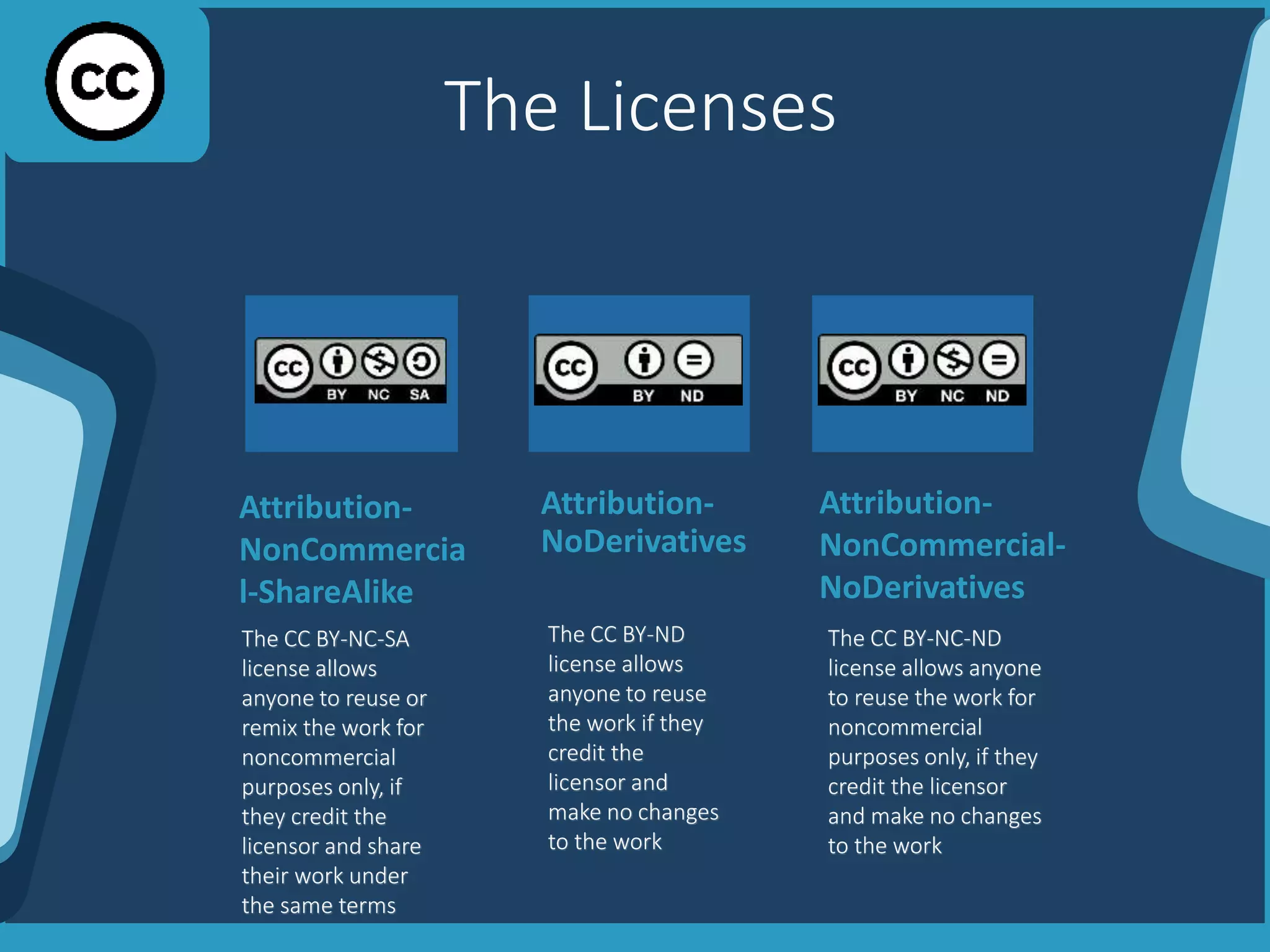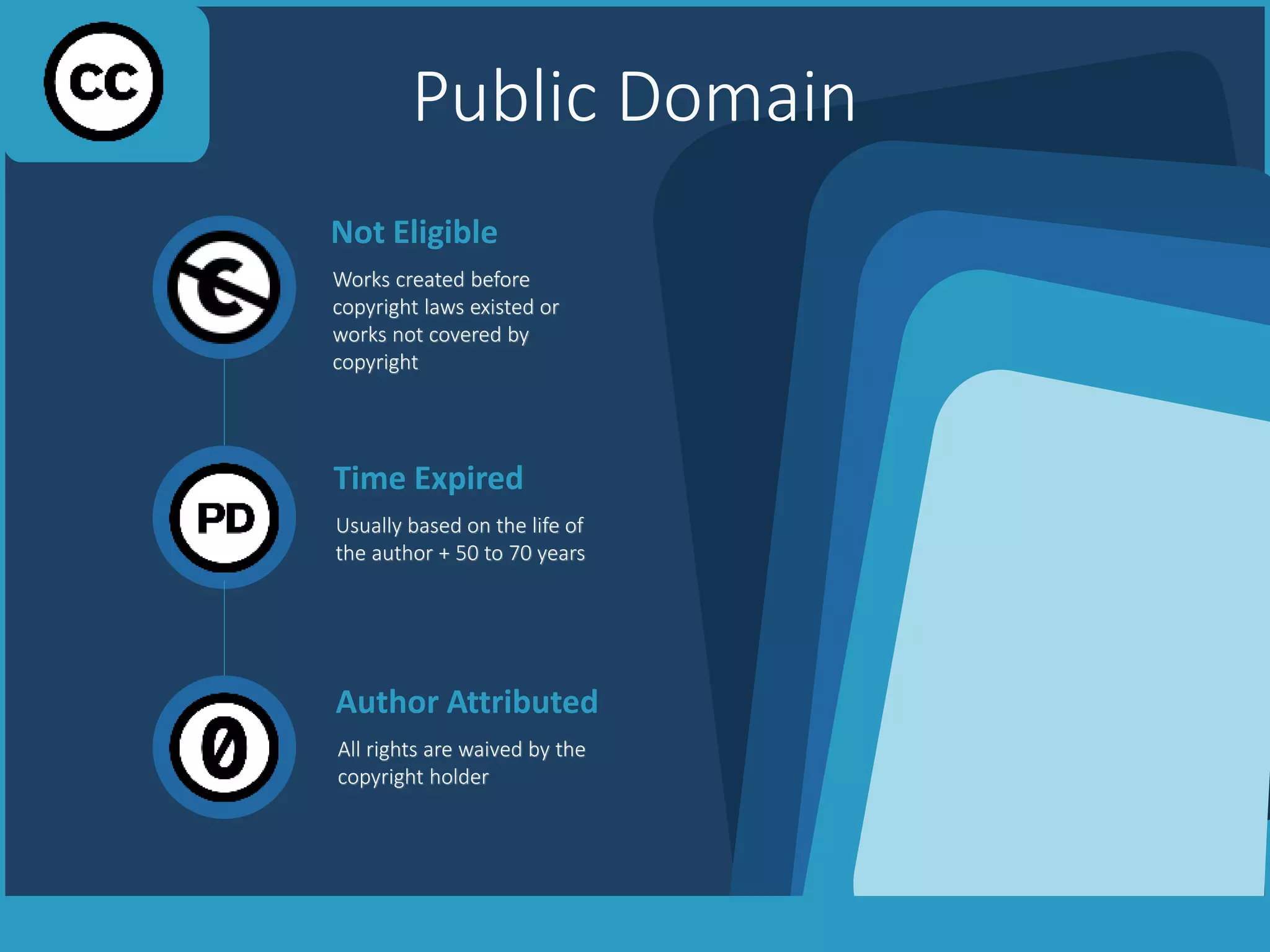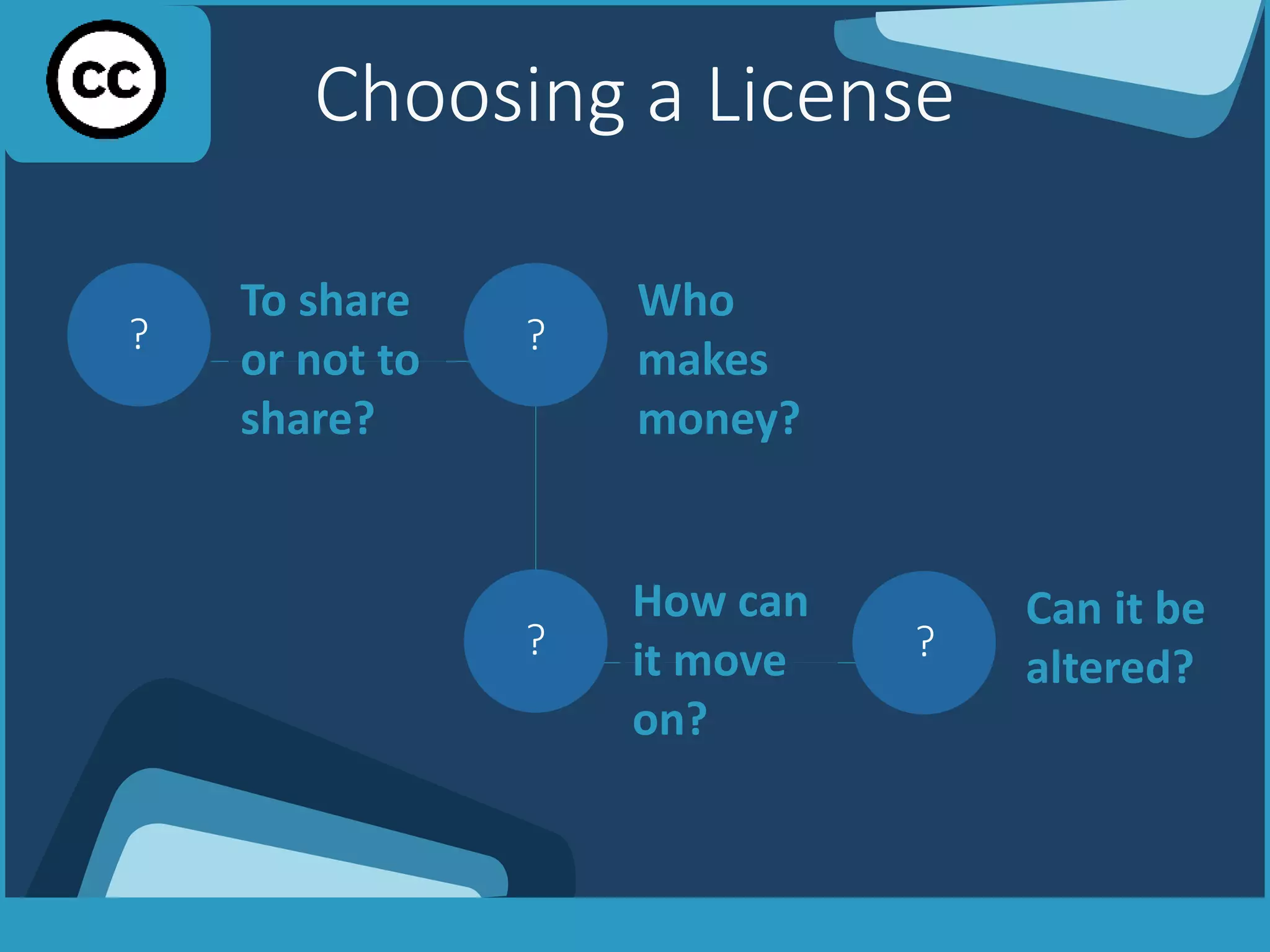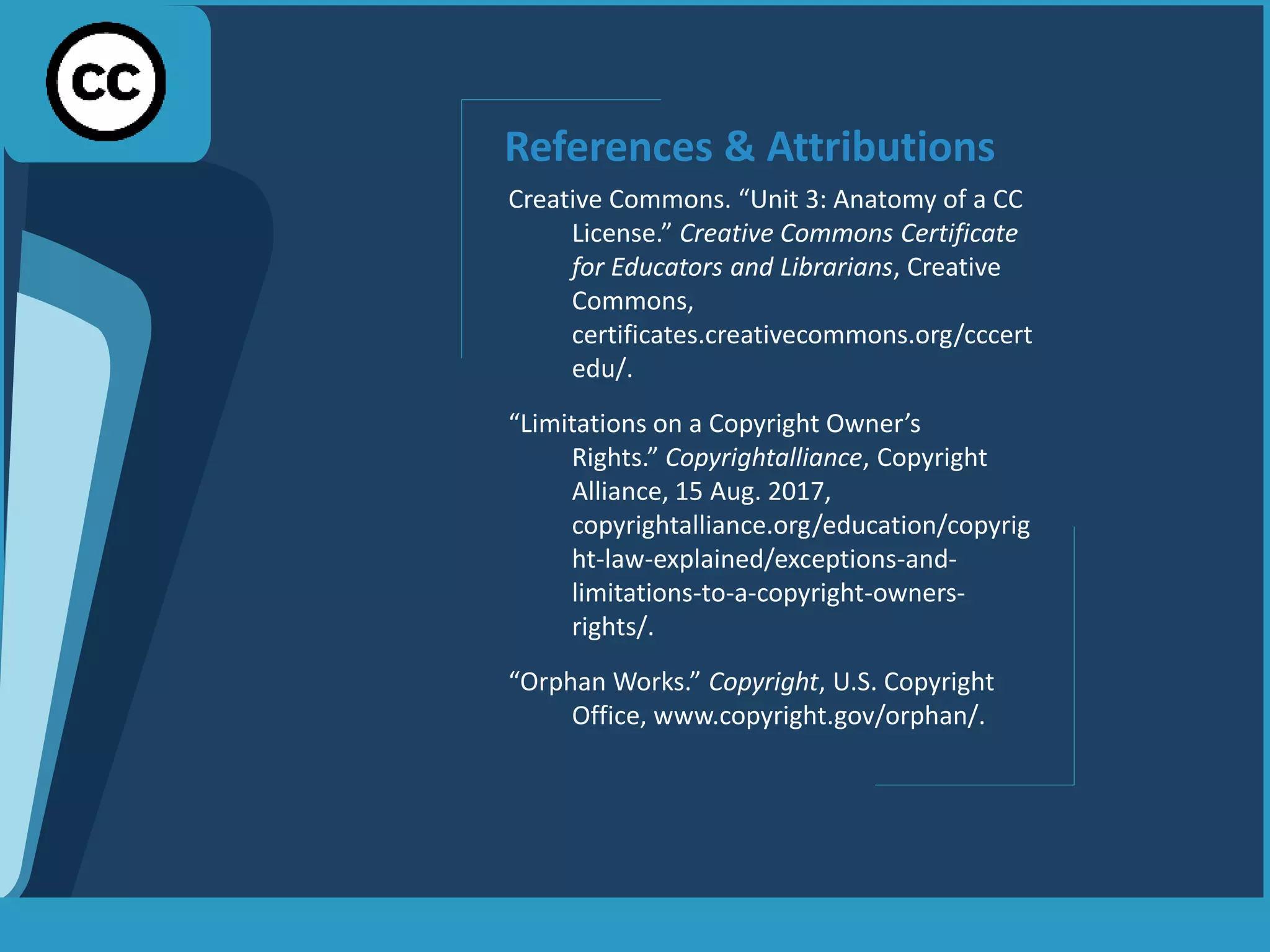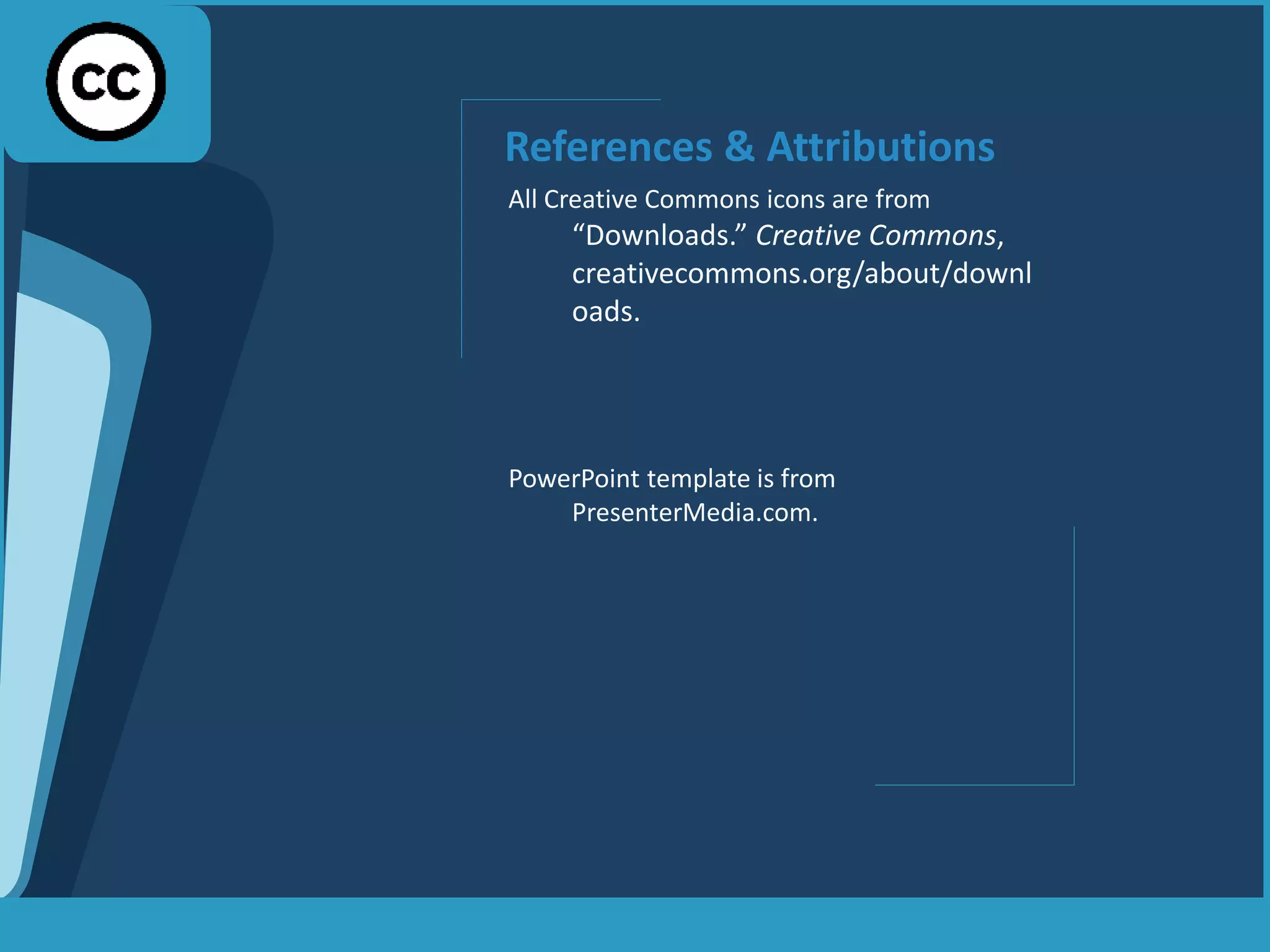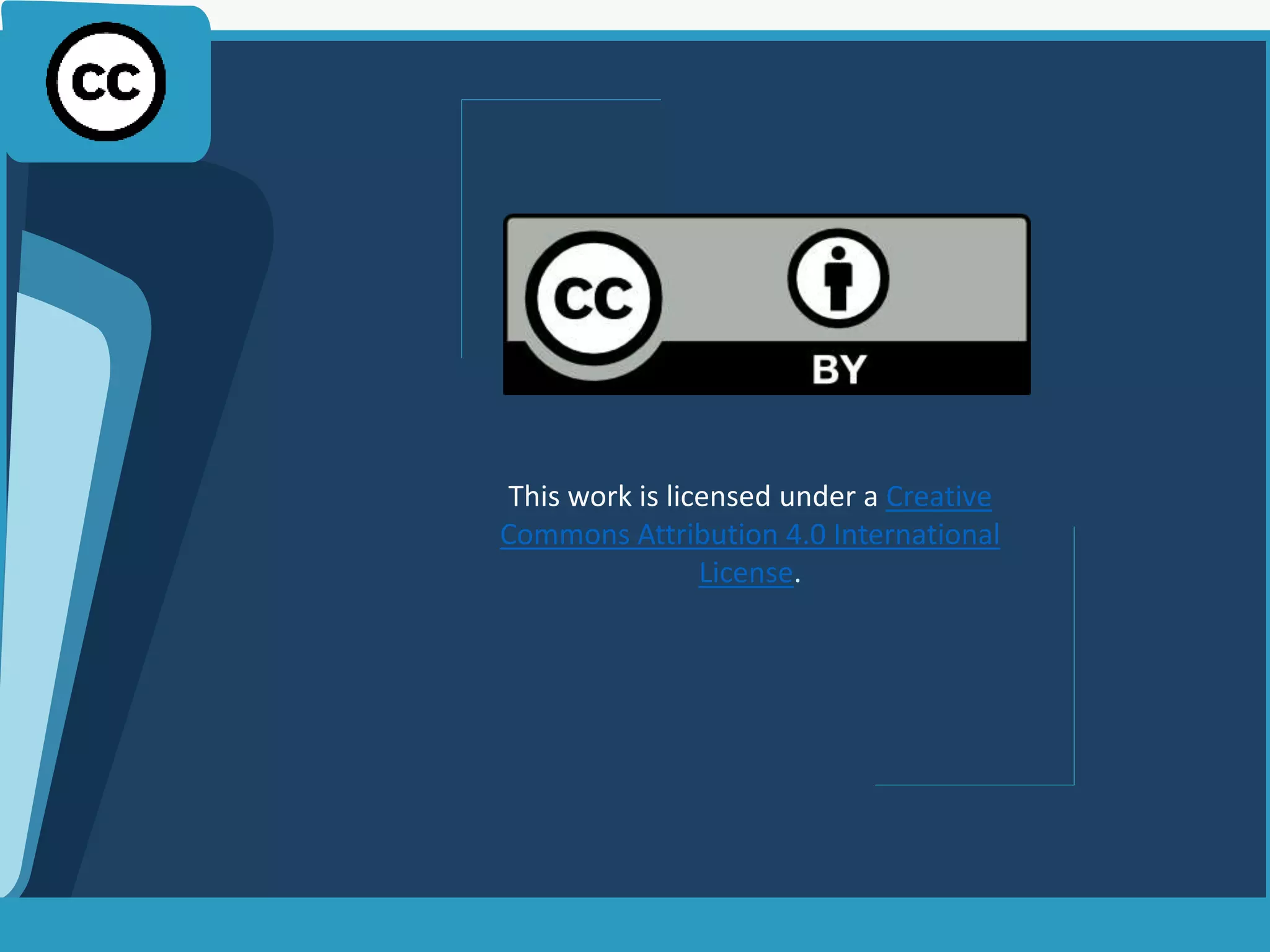Creative Commons licenses allow copyright holders to relinquish some rights, facilitating openness and creativity while adhering to copyright law. They encompass various permissions such as non-commercial use, attribution requirements, and conditions for adaptations. The document provides an overview of different license types and their specific terms, alongside information on copyright limitations and related resources.

